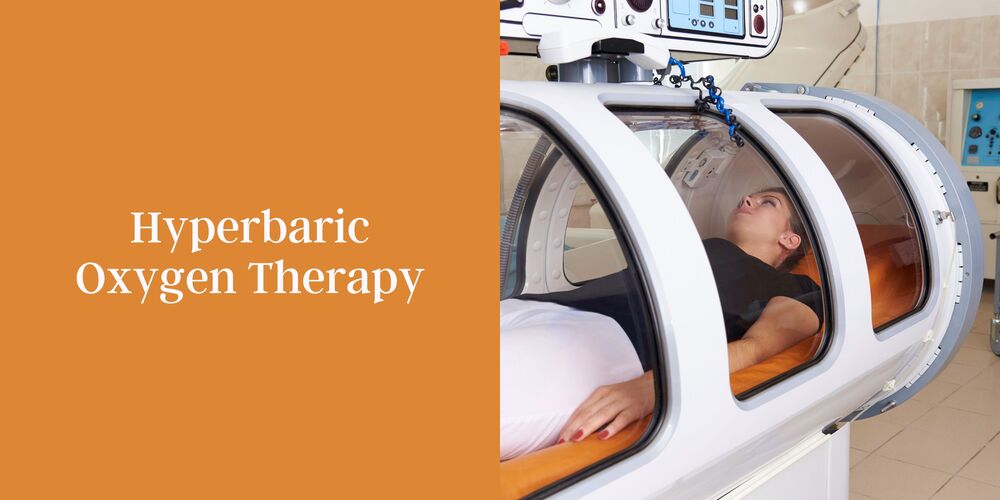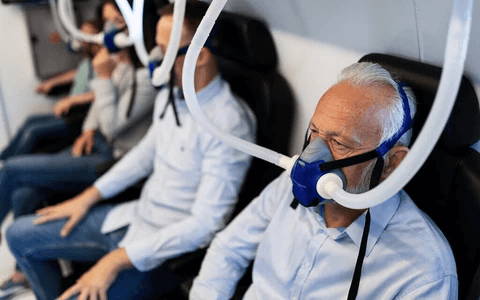
Hyperbaric Oxygen (Hard Chamber) Therapy?
0 Comments
Hyperbaric Oxygen Therapy
Sept 26, 2023, By Michael Grant White
Learn more about Hyperbaric Oxygen Therapy, its indications, working, effects of increased pressure, and possible complications of HBOT. This article also discusses the types of hyperbaric chambers and their characteristics.

What is Hyperbaric Oxygen Therapy?
Hyperbaric oxygen therapy (HBOT) is the intermittent inhalation of up to 100% oxygen at pressures FAR greater than at sea level. The technique may be implemented in a multiplace chamber (usually a large steel cylinder) highly pressurized with air while the patients breathe 100% oxygen.
Alternatively, a monoplace (1-person) chamber, highly pressurized with 100% oxygen, may be utilized. A variation is the "'mildly/soft" pressurized chamber, but is way less effective than the hard chambers.
How does it work?
What is the mechanical effect of increased pressure?
What is the mechanical effect of increased pressure?
The absence of exertion can permit imbalances in respiratory gas exchange in CO2 and O2. Problems are rare - but can occur in extremely health-compromised individuals.
Too rapid increases or decreases in pressure can cause pain or injury in air compartments in the body, specifically the ears or lungs. Users should not hold their breath during depressurization, just like divers should exhale during ascent.
Nitrogen dissolves into the blood. Medical hyperbaric users are usually advised not to travel by air for 24 hours to avoid the bends.
Inability to equalize Middle Ear Pressure - 0.37%
Paranasal Sinus Blocks - 0.09%
Confinement Anxiety - 0.05%
Oxygen Convulsions - 0.009% - (All Ceased After Removing Hoods/Masks)
Pulmonary Oxygen Toxicity - 0.00%
Permanent Ocular Refractive Changes
Indications For Usage
Air or gas embolism
Decompression sickness (the bends)
Carbon Monoxide Poisoning and Smoke Inhalation
Gas gangrene
Crush injury and traumatic wounds
Problem wounds
Compromised skin grafts, flaps, and replants
Necrotizing soft tissue infections
Refractory osteomyelitis
Radiation tissue damage
Thermal burns
Exceptional blood loss anemia
Adjunctive hyperbaric oxygen in intracranial abscess
Post heart attack rehabilitation
Stroke rehabilitation
Preventive medicine
Cerebral palsy and some other brain damage issues
COVID-19
Coronavirus - Hyperbaric Treatment
Hyperbaric Oxygen Hard Chambers

Mild Hyperbaric Chambers (Soft Chambers)
Patient/Person’s Body Frame (shoulder width)
Claustrophobia (fear of enclosed space)
Mobility issue
FAQ
I may be claustrophobic, which model should I choose?
A large size/model is the most popular model because it provides the most room and comfort level as well as temperature for those who need the space. The user can also bring in any portable electronics inside the chamber because it is very safe.
What type of % Oxygen does it provide?
The compressor that comes with the chamber takes room air, filters it down to .01 microns then compresses it before it goes into the chamber. Therefore, based on the pressure that the chamber provides, which is 1.3 ATA x 21% room air = 27.3% (inside the chamber)
How do I get more Oxygen if I need to?
If the doctor recommends an additional source of Oxygen based on the indication/application that you’re using the chamber for, an Oxygen Concentrator can be used compatible with the chamber by having the patient wear a mask/cannula inside the chamber
How Portable is a Portable Chamber?
One of the models/sizes, it’s portable enough that it can be traveled with. Some parts are not required to be taken while traveling (i.e., frames, mattresses, and bolsters) – products may vary based on the manufacturer.
What kind of programs are available?
There are monthly rentals (Rent-To-Own) on selected models available, and/or simply purchasing the chamber outright. (Programs may vary within companies.)
How do I know which company to choose?
Carefully do your research as to the location and facilities as well as their experiences in manufacturing these Chambers, as well as asking as many questions as you can think of. Check out Evolution Hyperbarics
Are used/refurbished units available?
Certainly! If there’s no preference for a new/used chamber, our company may have them based on availability, and the price will vary depending on the age of the chamber. My experience and research have convinced me that if you can exercise, the TURBO OXYGEN Enhanced Exercise approach will give far better benefits with much less cost.
The easiest way to think of hyperbaric oxygen versus exercising with the Turbo Oxygen System is that exercising with oxygen performs the same purpose of pushing oxygen into the cells that the chambers do; only it's far superior if you can exercise.
If you can exercise, exercise is far superior to lying down or just sitting there, chatting, watching TV, or at the computer.
Related Reading:
Learn to Breathe Better with The Optimal Breathing Mastery Kit.

Meet Mike White
Meet Michael Grant White, the Optimal Breathing Coach and get actionable insights on your breathing development, health and longevity



